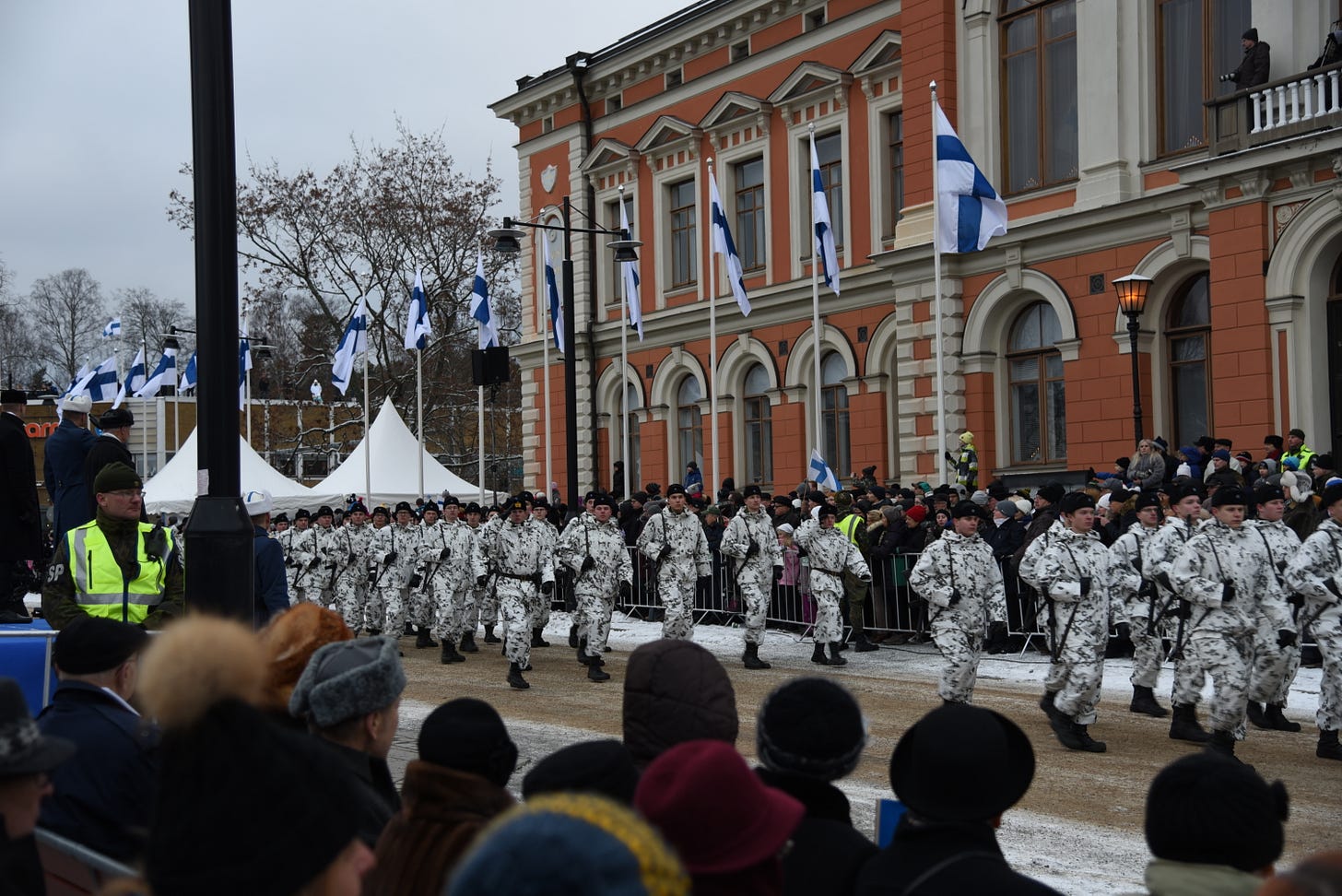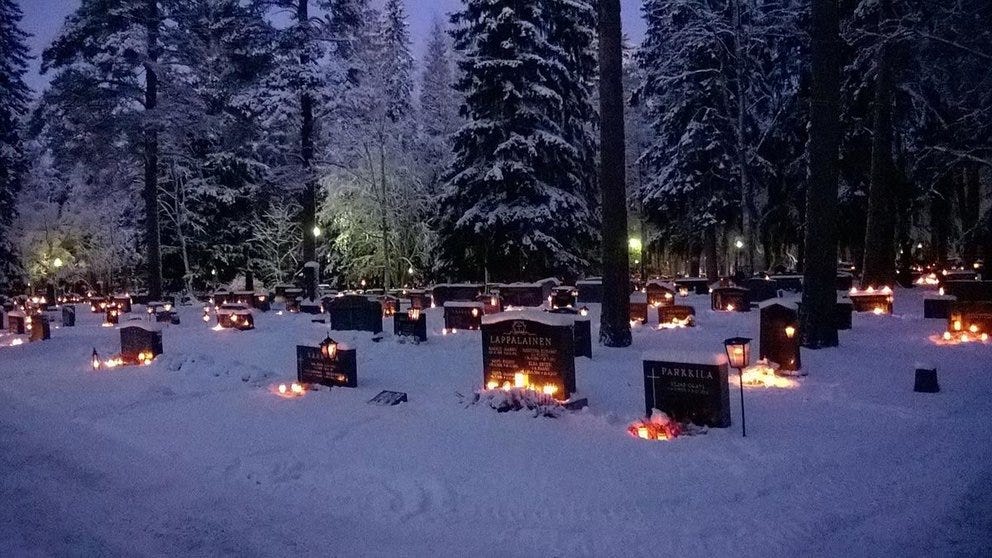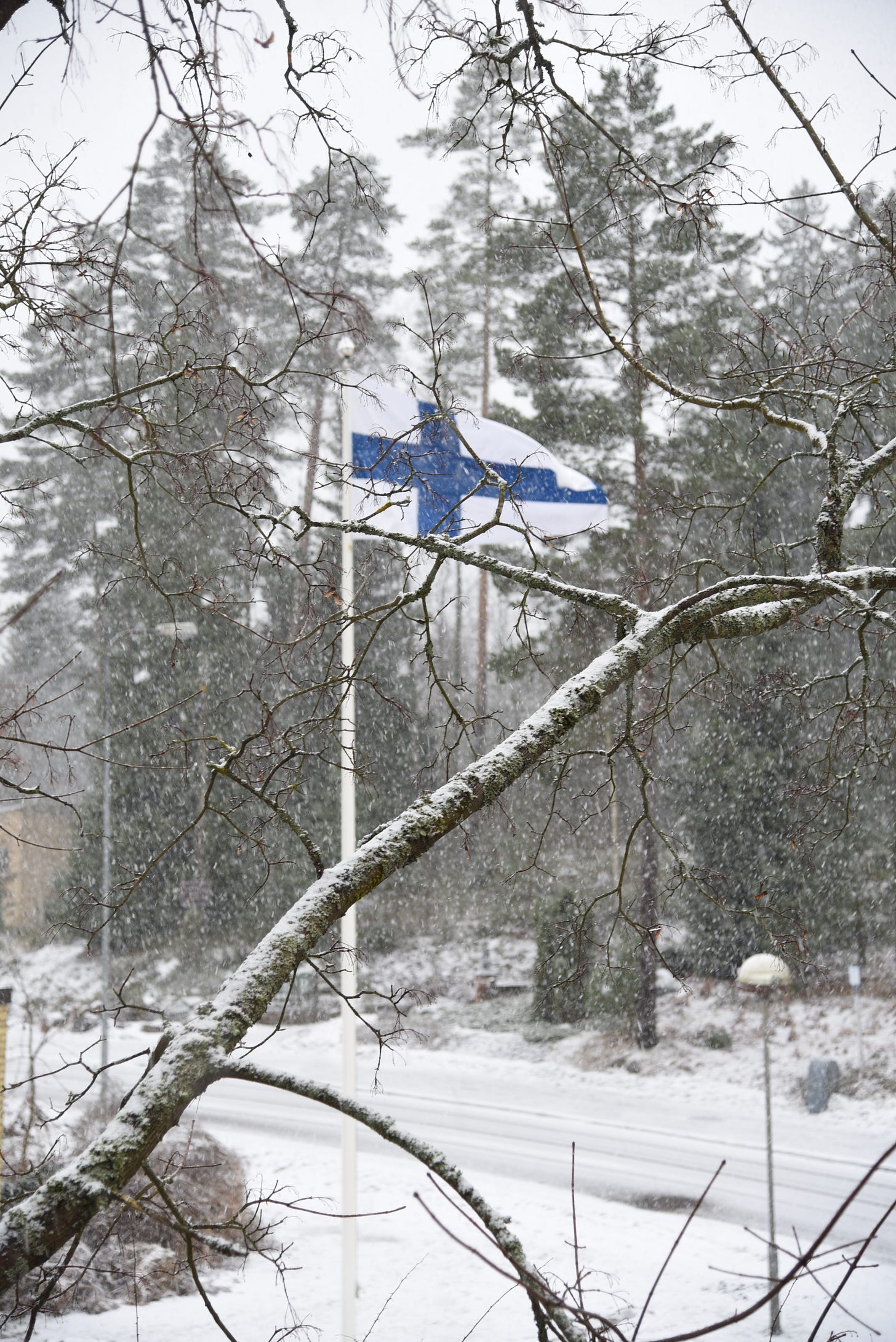Life in Finland: Holidays and Flag Days
A quick look at what Finns celebrate and recognize throughout the year.
Hello all! I spent quite a bit of time on my analysis of the House Subcommittee Hearing concerning the Polar Security Cutter this week, but still wanted to write something about Finnish culture. I thought that it would make sense to follow up last week’s post about the unique Finnish celebration of Vappu with a quick overview of Finland’s holidays and flag days.
For those of you more interested in icebreakers and other matters, I will be back next week with more on these important topics. But for now, enjoy a short piece about Life in Finland.
Finland has a total of thirteen ‘official’ public holidays. When they fall on a weekday, they are paid holidays and days off from school. For those that fall on a weekend, or are always on a Sunday, there is no such benefit.
The Evangelical Lutheran Church of Finland is the official, state-sponsored Church. That is why Christian Holy Days (Epiphany, Good Friday, Ascension Thursday, All Saints Day, etc.) are included as official public holidays.
In addition to the thirteen official holidays, there are four “eves” that, although widely celebrated, are not official holidays. Still, many workplaces and stores close early or entirely on these days. They are in italics in the list below. Note that the Finnish word “atto” means “eve,” although you probably could have figured that out on your own.
Finnish Holidays (Finnish names in parenthses)
January 1 – New Year's Day (Uudenvuodenpäivä)
January 6 – Epiphany (Loppiainen)
Varies– Good Friday (Pitkäperjantai)
Varies – Easter Sunday (Pääsiäinen)
Varies– Easter Monday (Pääsiäismaanantai)
April 30 – May Day Eve (Vappuaatto)
May 1 – Vappu (Vappu)
Varies– Ascension Thursday (Helatorstai)
Varies – Pentecost (Helluntaipäivä)
Varies – Midsummer's Eve (Juhannusaatto)
Varies– Midsummer Day (Juhannus)
Varies– All Saints' Day (Pyhäinpäivä)
December 6 – Finland's Independence Day (Itsenäisyspäivä)
December 24 – Christmas Eve (Jouluatto)
December 25 – Christmas Day (Joulupäivä)
December 26 – Boxing Day or Second Christmas Day (Tapanipäivä or toinen joulupäivä)
January 31 – New Year's Eve (Uudenvuodenatto)
The holidays tied to Easter (Good Friday, Easter, Easter Sunday, Ascension Thursday, and Pentecost) vary because Easter changes every year. (As a reminder, Easter is celebrated on the Sunday after the first full moon following the vernal equinox).
Midsummer- called Juhannus- is always celebrated on a Saturday, so it can vary from the actual summer solstice. It, along with Juhannusaatto, is celebrated on a Friday and Saturday between June 19 and June 25. In practice, midsummer eve is normally a day off from work.
All Saints’ Day is nominally November 1st, but in Finland is always observed on a Saturday. It can take place between Oct 31 and November 6th and is a somber occasion, focused on remembering the deceased.
Christmas Eve is the big celebration day, more so than Christmas Day. It is when Joulupukki (Santa) comes to bring gifts to good boys and girls. He normally comes to the door and spends some time visiting with the children and their family as he delivers his gifts that evening.
Finnish Flag Days
According to Finland’s Interior Ministry:
Finland has official flag days and national flag days designated in the calendar. The flag may be flown on other days as well.
Flying the flag is a great and dignified way to express joy and emphasise a day of celebration. Flying the flag is also a great way of showing respect or expressing sorrow. There is no reason to be shy about flying the flag. No reason is too small for flying the flag.
Finland has a rather tolerant flag flying culture, although a certain degree of sombreness is connected to flying the flag. It is good to remember that Finland is one of the best countries in the world. This is cause to rejoice, and hoisting the Finnish flag is a great way to celebrate independence.
Official Flag Days:

By law, the Finnish flag must be flown from public buildings on the following days:
28 February, Kalevala day; the occasion is also celebrated as the Day of Finnish Culture
1 May, Labour Day
Second Sunday in May, Mothers' Day
4 June, birthday of C.G.E. Mannerheim, Marshal of Finland; the occasion is also celebrated as the Flag Day of the Finnish Defence Forces
Saturday between 20 and 26 June, Midsummer Day; the occasion is also celebrated as the Day of the Finnish Flag
Second Sunday in November, Fathers' Day
6 December, Independence Day
Days when Finland holds parliamentary and local elections, elections to the European Parliament, or a referendum
The day the Finnish President is inaugurated
Customary Flag Days
5 February, birthday of the poet J.L. Runeberg
19 March, birthday of the writer Minna Canth, Day of Equality
9 April, the day Mikael Agricola, the founder of the written Finnish language died and Elias Lönnrot, a collector of folklore was born; the occasion is also celebrated as the Day of the Finnish Language
27 April, National War Veterans' Day
9 May, Europe Day
12 May, birthday of the statesman J. V. Snellman
Third Sunday in May, Remembrance Day
6 July, birthday of the poet Eino Leino; the occasion is also a celebration of poetry and summer
The last Saturday in August, Finland’s Nature Day
1 October, Miina Sillanpää Day, Day of Civic Participation
10 October, birthday of the writer Aleksis Kivi; the occasion is also celebrated as the Day of Finnish Literature
24 October, United Nations Day
6 November, svenska dagen, Finnish Swedish Heritage Day
20 November, Day of Children's Rights
8 December, birthday of the composer Jean Sibelius; the occasion is also celebrated as the Day of Finnish Music
Traditionally, the flag is raised at 0800 and lowered at sunset. But this is Finland- during the year, there are places and times that do not have a sunrise or a sunset. Fortunately, the interior ministry provides guidelines:
…it should be hoisted at eight in the morning and lowered at sunset. However, in summer the flag can be kept flying until 21.00.
At Midsummer, the flag can be hoisted at 18.00 on Midsummer Eve and should not be lowered until 21.00 the following day.
On Independence Day, and on an election day when voting ends after sunset, the Finnish flag should be lowered at 20.00.
Government agencies may deviate from the above provisions.
According to established practice, the Ministry of the Interior recommends that the flag is flown from 08.00 to 16.00 in winter during the polar night, when the sun does not rise above the horizon in the far north.
On flag days, it seems that every building in every city flies a flag over the entrance doorway. Throughout the towns, many houses and housing complex have flags flying, like the one in my photo above. Often, housing companies/apartment complexes hire people to raise and lower the flags. I saw this one morning in Helsinki, as a couple of workers went from building to building putting up countless flags.
Regardless of the method, as a result of these efforts you can very easily tell when it is a Finnish Flag Day, as they are everywhere- in my view, even more so than on holidays in the United States. It is a beautiful sight and a sign of Finnish patriotism to see all of the blue and white (sinivalkoinen) flags flapping in the wind.
Thanks for reading, subscribing, and spreading the word.
Like by pressing the heart if you want to see more posts like this. Subscribe if you haven’t already done so that you’ll never miss an update. And do consider sharing with a friend or twelve.
All the Best,
PGR








Pete, I always love to read your articles man. Keep up the good work.
Maybe on an article touch on a top 5 list of things the Finns are most proud of and also a list of their top 5 concerns for the country and Europe going forward.